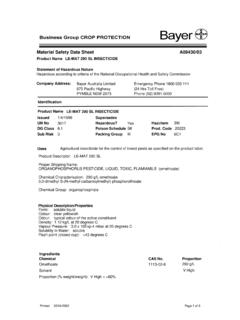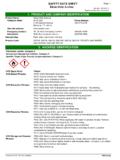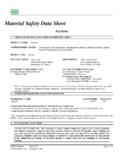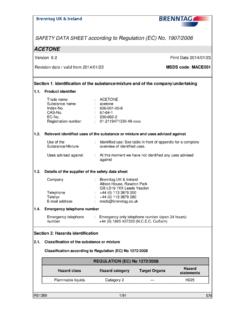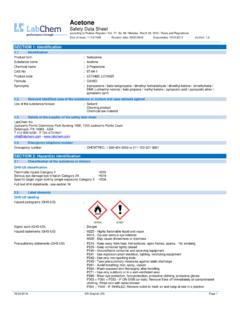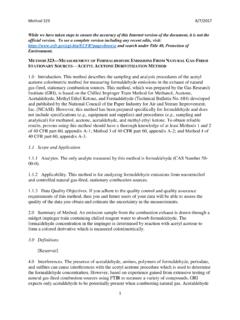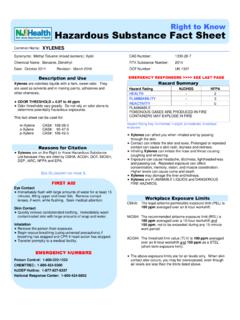Transcription of MATERIAL SAFETY DATA SHEET Acetone - DKT
1 MSDS for Acetone Page 1 of 7 MSDS-010 RED TEXT = CONTROLLED COPY GREY TEXT = UNCONTROLLED COPY MATERIAL SAFETY data SHEET Acetone SECTION 1: IDENTIFICATION OF THE MATERIAL AND SUPPLIER Product Name: Acetone Other Names: 2-Propanone; Dimethyl Ketone Recommended Use: General purpose solvent Supplier: CSR Distilleries Operations Pty Ltd ABN: 85 009 660 191 Address: 265 Whitehall Street Yarraville VIC 3013 Australia Telephone: 1800 819 618 (available in Australia only) Facsimile: 1800 647 260 (available in Australia only) Emergency Phone: 000 Fire Brigade and Police (available in Australia only).
2 Important Notice: This MATERIAL SAFETY data SHEET (MSDS) is issued by the Supplier in accordance with the National Occupational Health and SAFETY Commission (NOHSC) Code of Practice. As such, information in it must not be altered, deleted or added to. The Supplier will issue a new MSDS when there is a change in product specifications, and/or regulatory requirements. The Supplier will not accept any responsibility for any changes made to its MSDS by any other persons or organisations.
3 SECTION 2: HAZARDS IDENTIFICATION HAZARDOUS DANGEROUS GOOD Risk Phrases: R11 Highly Flammable R20/22 Harmful by inhalation and if swallowed R66 Repeated exposure may cause skin dryness and cracking R67 Vapours may cause drowsiness and dizziness R36/37 Irritant to eyes and respiratory system SAFETY Phrases: S2 Keep out of reach of children S7/9 Keep container tightly closed and in a well ventilated place S16 Keep away from sources of ignition no smoking S23 Do not breathe vapour S29 Do not empty into drains SECTION 3.
4 COMPOSITION / INFORMATION ON INGREDIENTS Chemical Name Proportion CAS Number Acetone 100% 67-64-1 This MATERIAL is listed on the Australian Inventory of Chemical Substances (AICS) MSDS for Acetone Page 2 of 7 MSDS-010 RED TEXT = CONTROLLED COPY GREY TEXT = UNCONTROLLED COPY SECTION 4: FIRST AID MEASURES Swallowed: If a minor amount has been accidentally swallowed, then, if conscious, give large amounts of water.
5 Do not allow further work until fitness for duties is established. Do not attempt to induce vomiting or give anything by mouth to an unconscious person. Seek medical attention. If there are signs of drunkenness (intoxication or inebriation) then serious health effects may follow (depending on the amount swallowed or inhaled). Treat unconsciousness by placing the person in the coma position. Apply artificial respiration if breathing stops. Immediate medical attention should be sought and the affected person transferred and accompanied to the care of a doctor or hospital.
6 Eye: Flush eye with running water for a minimum of 15 minutes. Seek medical attention promptly if irritation persists or any loss of vision occurs. Skin: Immediately remove contaminated clothing. Wash skin with water. Launder contaminated clothing before re-use. Inhaled: Remove promptly to fresh air. If there are signs of drunkenness (intoxication or inebriation) or respiratory irritation, dizziness, nausea or headache occurs, seek immediate medical attention. Treat unconsciousness by placing the person in the coma position.
7 Apply artificial respiration if breathing stops. Immediate medical attention should be sought and the affected person transferred and accompanied to the care of a doctor or hospital. Notes to doctor: Treat symptomatically and as for narcotic substance. SECTION 5: FIRE FIGHTING MEASURES Specific Hazards: Highly flammable liquid. May form flammable mixtures with air. The vapour is heavier than air and may travel along the ground; distant ignition and flash back are possible. Run off to sewers and drains may cause explosions.
8 Isolate for at least 800 metres in all directions if tanks or tankers are involved. The use of compressed air for filling, discharging, mixing or handling is prohibited due to the vapour hazard. All vessels must be earthed to avoid generation of static charges when agitating or transferring. Avoid all ignition sources. Intrinsically safe equipment is necessary in areas where this chemical is being used. Extinguishing Media: Use water fog (or if unavailable fine water spray), dry chemical, carbon dioxide or alcohol stable foam.
9 Fire Fighting Procedures: Use water to cool exposed containers. Heating can cause expansion or decomposition leading to violent rupture of containers. If safe to do so, remove containers from path of fire. Spills and leaks may be washed away with copious volumes of water, fog or spray. For major fires or where the atmosphere is either oxygen deficient or contains unacceptable levels of combustion products, fire-fighters must wear self-contained breathing apparatus with full face-mask and protective clothing.
10 Hazardous Decomposition Products: Burning can produce carbon monoxide and/or carbon dioxide. SECTION 6: ACCIDENTAL SPILL & RELEASE MEASURES Containment Procedures: In the event of a spillage eliminate all sources of ignition and take measures to prevent static discharge no smoking. Stop and contain the spill for salvage or absorb in inert absorbent MATERIAL ( soil, sand, vermiculite) for disposal by an approved method in accordance with regulatory guidelines. Prevent run-off into waterways and drains.


